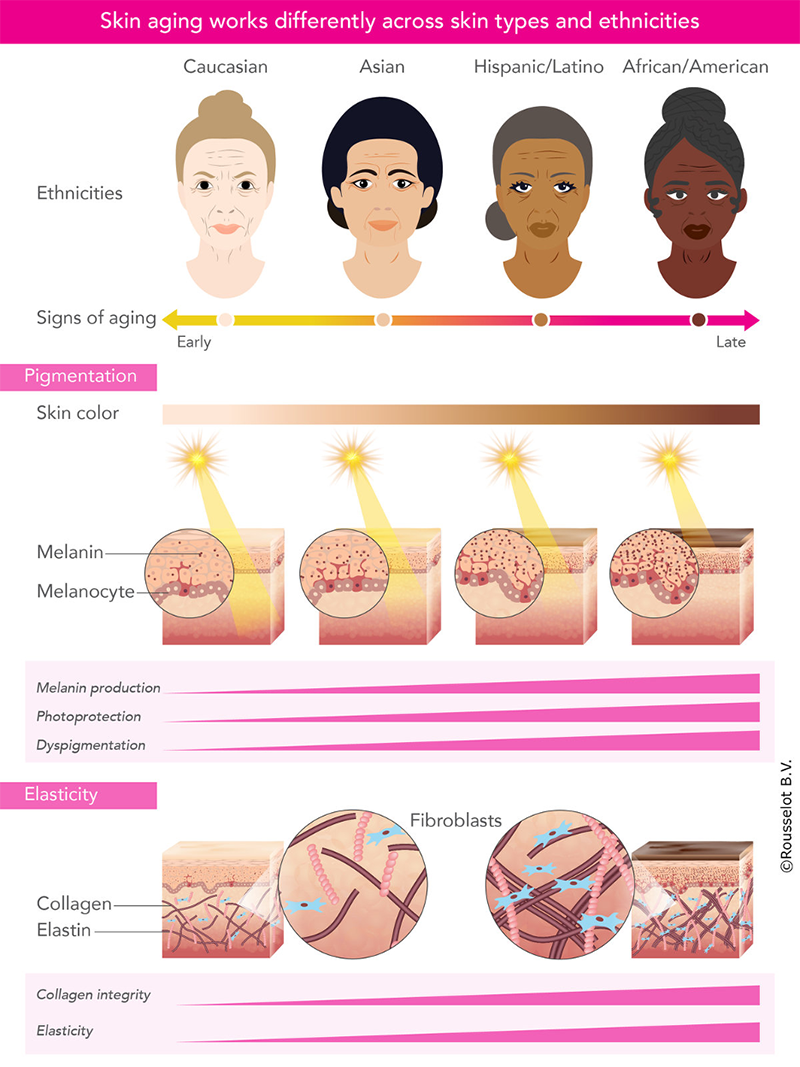This article is sponsored by Rousselot
While more of us are starting to take care of the health of our skin, many of us are unaware of some of the factors that make our skin unique.
In this article, Rousselot explores how skin type and ethnicity can impact the visible signs of ageing.
How many skin groups are there?
Generally speaking, skin can be categorised into four broad groups: African/American, Asian, Caucasian and Hispanic/Latino.
It is important to note that each of these categories is heterogeneous, so we need to avoid over-generalising.
At the same time, awareness of these four skin groups can help us understand better how much and how our skin is affected by age, depending on our genetic and ethnic background.
What important skin differences are there?
One of the most obvious variations across the four skin groups is skin colour.
In simple terms, skin colour is determined by the amount of melanin in the skin.
Caucasians, for example, tend to have a lower amount of melanin, which leads to a lighter skin tone.
This can make Caucasians more susceptible to pronounced photoageing, the premature appearance of ageing due to damage caused ultraviolet (UV) rays.
Darker skin tones have a higher melanin content, which provides stronger photoprotection, leading to less photoageing.
The melanin in darker skins, on the other hand, can be unstable, making these skin groups more prone to dyspigmentation, or abnormalities in the formation or distribution of pigment.
There are other differences. For example, Caucasian skin is fragile, usually showing an earlier loss of elastin and collagen fiber structure, which causes wrinkles.
Darker skin tones have a compact dermis in the deep layer of the skin, with more active cells and a stronger collagen network.
Because of this, dark-skinned people typically do not start wrinkling until 10 to 20 years later.
Which signs of ageing do different skin types show?
As a result of these and many other differences, each skin group presents signs of ageing in distinct ways. For example:
- In lighter skin tones, such as Caucasian skin, one of the major concerns is the formation and appearance of wrinkles
- For East Asians, dark spots, or hyperpigmentation, can appear on the light skin
- For people of Hispanic descent, the formation of pronounced nasolabial folds, or ‘smile lines’, can be a concern
- In darker skin, for example, in people of African origin, heterogeneous pigmentation can be an issue, creating marks or an uneven tone.
Are scientists researching skin care and ethnicity?
Apart from our ethnic background, each one of us has a unique genetic makeup. This means our skin will be affected by ageing in different and often unique ways throughout our lives.
All of this confirms that as we investigate the effect of ageing on the skin, it is pivotal that we take skin type and ethnicity into account.
In a Rousselot study, conducted in Brazil, a mixed population with a wide range of ethnicities and skin types was studied.
Investing in scientific research of this nature will help building a better picture of the range of unique skin types in our world – and help us take better care of the health of our skin.
Want to learn more about skin health? Watch Rousselot’s webinar on collagen peptides for beauty from within.
This article was originally published in November 2020


